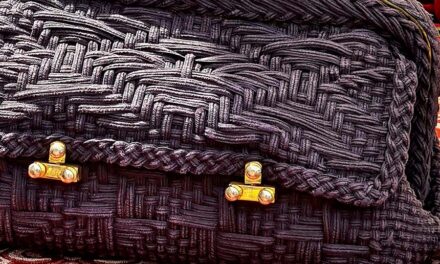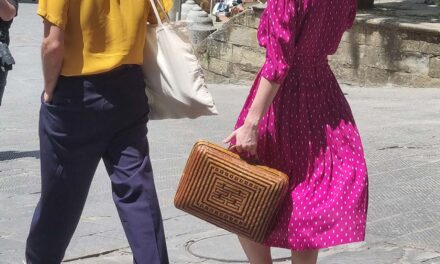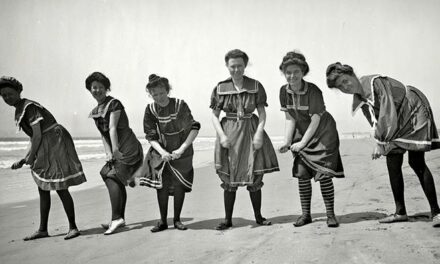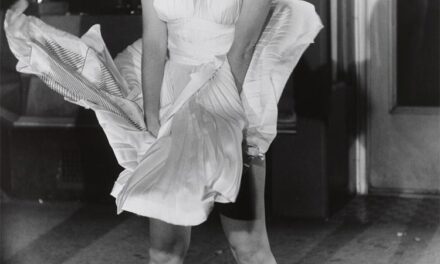Oh, darling, let me take you on a whirlwind adventure through the fabulous world of women’s trousers, a journey as thrilling as rummaging through the treasure trove of a vintage boutique in the heart of Paris. Imagine the scene: me, draped in my latest high-waisted find, sipping espresso at a quaint café, musing over the audacious evolution of women’s fashion. Trousers, my loves, are not just a garment; they’re a revolution stitched in fabric, a testament to our unyielding spirit and flair for the dramatic.
Once upon a time, in the dim corridors of history, the very idea of a woman donning trousers was as scandalous as wearing diamonds to breakfast. Picture this: the early 1900s, a time when skirts ruled and trousers were a distant dream. But oh, how we’ve sashayed past those days! It’s a tale worth telling, over cocktails, perhaps, about how trousers transcended from forbidden fruit to the quintessence of chic.
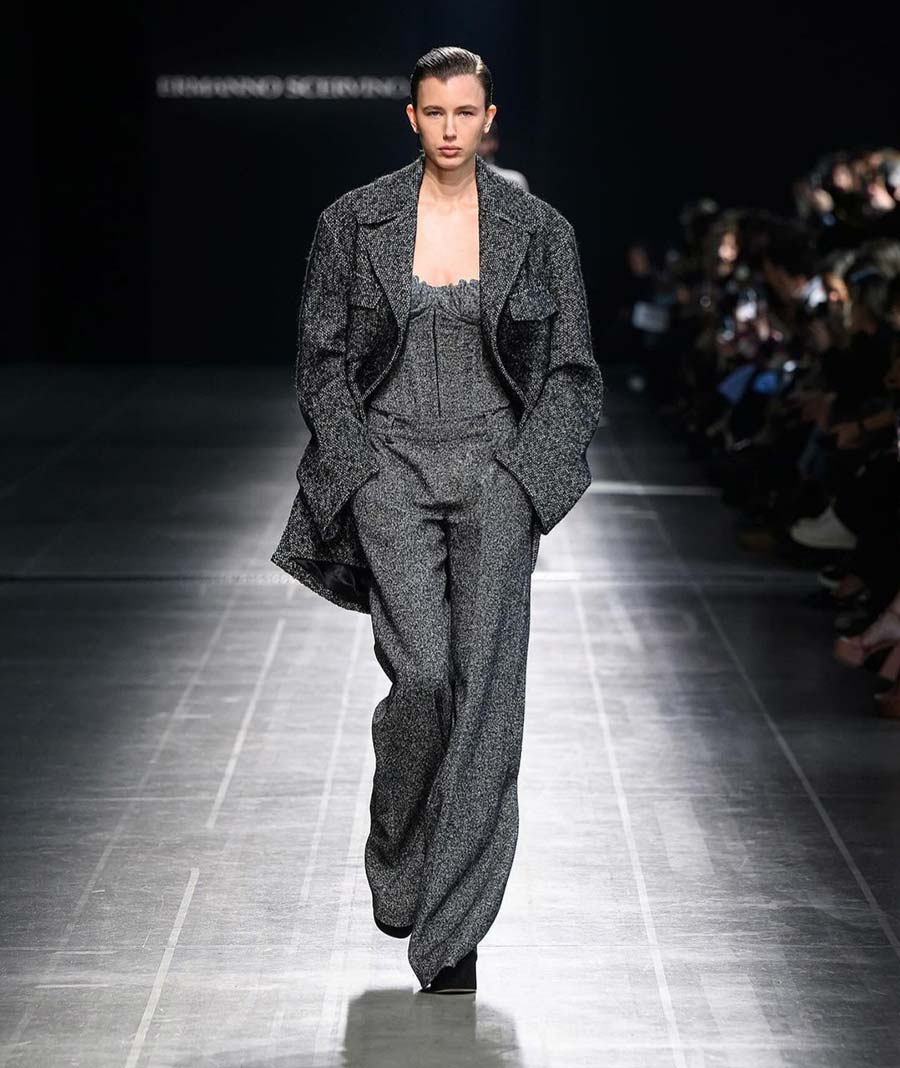
Now, fast forward to the present, and trousers have become as indispensable to our wardrobe as the little black dress. But not just any trousers, my dear. We’re talking about the high-waisted treasures that hug every curve, the kind that whispers of secret soirees and moonlit rendezvous. They’re the armor of the modern-day goddess, perfect for camouflaging those little indulgences while cinching the waist to give us that hourglass silhouette we so adore.
Ah, but the vintage charm of trousers, that’s a love affair rekindled with every season. Each pair tells a story, of women who dared to break the norms, of smoky jazz clubs where Dietrich and Hepburn reigned supreme, their trousers a symbol of their fearless individuality. These icons, with their effortless elegance, showed us that trousers weren’t just for the boys; they were a statement, a form of expression that said, “I am here, and I am fabulous.”
The real triumph, however, came later, when trousers broke the final frontier: the workplace. Oh, the battles fought over boardroom tables, where trousers were once considered a faux-pas! But we persevered, and by the ’80s and ’90s, thanks to trailblazers like Liz Claiborne, trousers weren’t just accepted; they were expected. They became our armor in the corporate battlefield, a symbol of our competence, and our equality.
And so, here we are, my loves, in an era where trousers are as varied as our moods. From the high-waisted palazzos that whisper of romance to the sharply tailored pieces that scream power, trousers have become our canvas, a way to express our multifaceted selves. They’re a nod to the past, a celebration of the present, and a promise for the future.
Coco Chanel
Coco pioneered the skirt to the trousers for the everyday practical women. Watch the latest on The New Look about the competition between Coco and Dior, what she created after the war.
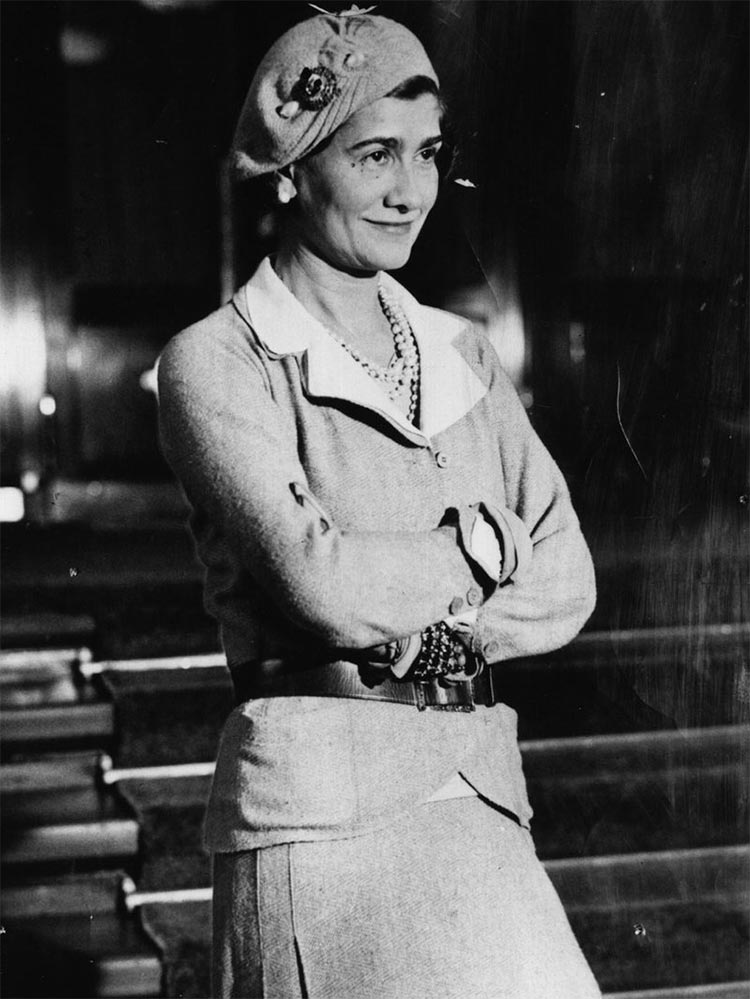
Marlene Dietrich
Let’s not forget the role of cinema and the gleaming allure of Hollywood, where trousers found their way into the spotlight, transforming actresses into style icons. Hepburn in “The Millionairess” or Dietrich in the ’40s, each frame a lesson in how to wear trousers with unabashed confidence. These women were not just actresses; they were the vanguards of fashion, turning every sidewalk into a runway.
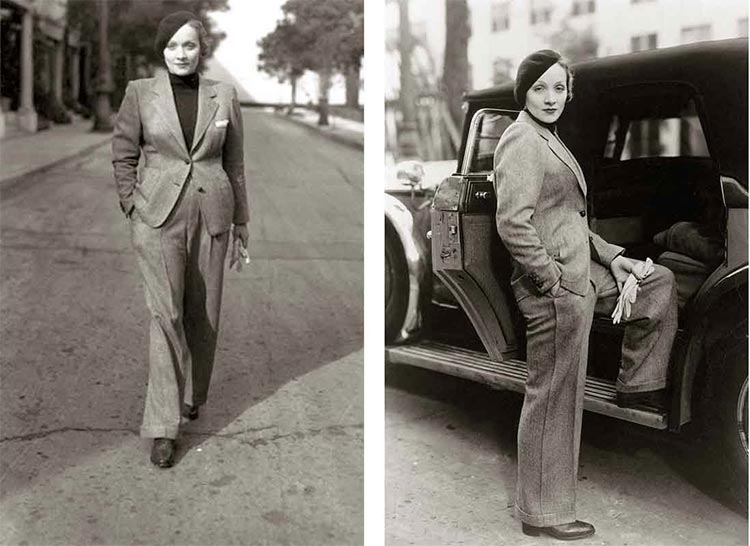
Let’s toast to the 1960s and ’70s, shall we? A time when fashion exploded into a kaleidoscope of possibilities, and trousers for women became not just acceptable but adored. The icons of the era, André Courrèges and Yves Saint Laurent, architects of the revolution, introduced us to trousers that weren’t just clothing but a declaration of independence, a sartorial shout of liberation. And let’s not forget the seismic impact of the women’s movement, darling, it wasn’t just about burning bras; it was about the right to wear trousers with the same panache as any man.
Oh, how the times have twinkled and turned, my dears! Let’s dive into a little-known chapter of our sartorial saga, a time when the very notion of women wearing trousers was as audacious as pouring champagne on your cornflakes. Imagine, if you will, a world where the sight of a woman in trousers was as rare as a pearl in your oyster. This, my fabulous friends, was the reality until the latter half of the twentieth century. Trousers for women? A concept as wild as wearing your diamonds to the gym!
Famous Women For Power Trousers
But necessity, as they say, is the mother of invention—or in this case, revolution. Picture the rugged landscapes of the American West, where women ranchers donned trousers not for fashion, but for survival. Think of the heroic women during World War II, stepping into factories, their trousers a symbol of their contribution to the war effort. And let’s not forget the trailblazing female aviators like Amelia Earhart, whose trousers were as much a part of their uniform as their unyielding courage. These were the women who wore trousers out of sheer necessity, pioneers on the frontier of fashion freedom.
Ah, but then there’s the leisurely 1940s, epitomized by none other than the Kennedys at play, hinting at the changing tides. What was it that finally loosened society’s stiff collar on women wearing trousers? The answer, my darlings, is as dramatic as a midnight rendezvous under the stars. World War II wasn’t just a battle for freedom overseas; it was a catalyst for a cultural revolution back home. As men marched off to war, women stepped into roles once deemed unthinkable, their trousers a badge of their newfound responsibilities.
The war years were like a grand ball, where norms were upended, and trousers became the unexpected guests, welcomed out of necessity. Women discovered the unparalleled comfort and practicality of trousers as they toiled in factories and fields, a revelation that would change fashion forever. It was in this crucible of change that trousers transitioned from a symbol of work to a statement of leisure and comfort. Gardening, leisure activities, and casual gatherings became the stages for this fashion evolution.
Yet, let’s not pop the champagne just yet. Despite this seismic shift, the corridors of power and formal events remained trousers-free zones for women. The post-war era was a time of contradiction, where the casual acceptance of trousers in private life clashed with their exclusion from the professional and formal spheres. It was a time of change, yes, but the journey towards full sartorial freedom was just beginning.
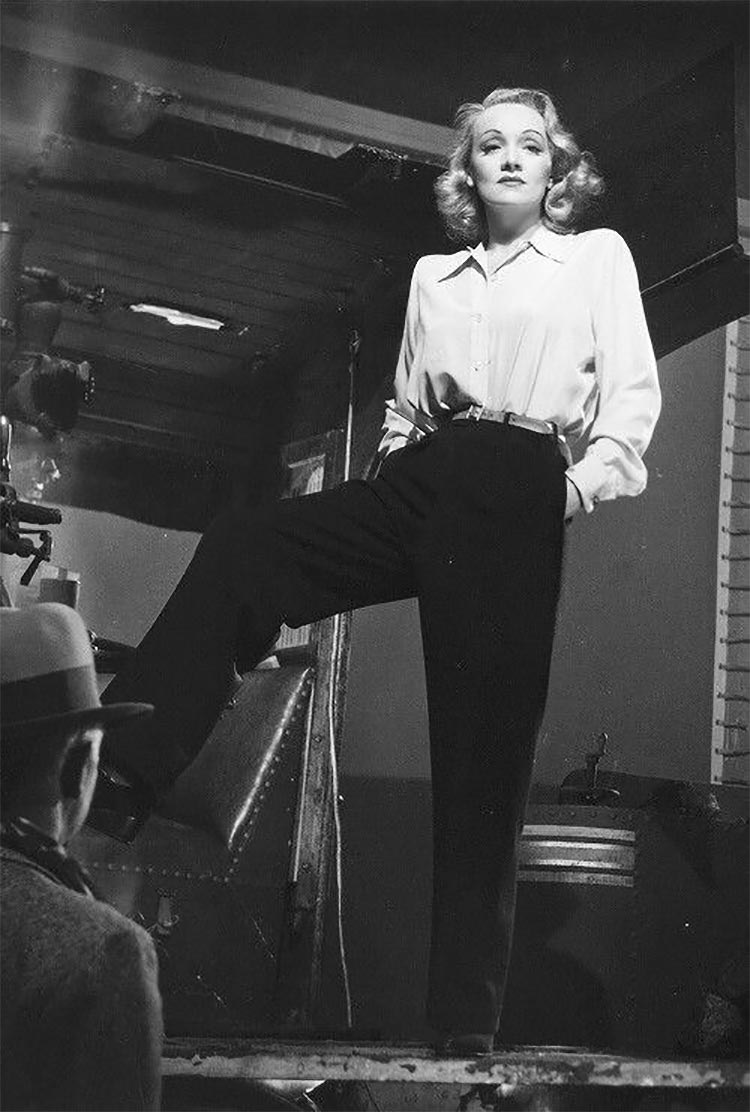
So, here’s to the women who wore trousers when trousers weren’t cool, who laid the groundwork for the fashion freedoms we enjoy today. They wore them not to make a statement, but because their lives demanded it. And in doing so, they paved the way for us to express ourselves, whether we’re commanding the boardroom or strolling through a moonlit garden, trousers not just permitted but celebrated.
Katherine Hepburn in trousers in the 1940s
Diving into the glamorous 1940s, a time when the silver screen was as influential as the runway, a few daring divas dared to defy the norms. Picture Katherine Hepburn, a vision in trousers, her elegance and defiance wrapped up in sleek fabric. She, alongside the enigmatic Marlene Dietrich, became the epitome of chic rebellion. These weren’t just actresses; they were icons of change, whispering through their wardrobe choices that women need not be confined to skirts and dresses. Their trousers were more than fabric; they were a statement, a challenge, a conversation starter.
Their audacity to embrace trousers, to stand tall and unapologetic, marked a pivotal shift. They showed the world that a woman’s elegance, her femininity, her power, wasn’t diminished by wearing trousers; rather, it was accentuated. These women, with their unmatched flair, were not just wearing trousers; they were wearing their independence, their individuality, their sheer defiance of societal norms.
Yet, as the wheel of fashion turned, entering the 1950s, a paradox emerged. The war was over, and with it, the brief flirtation with practicality and empowerment seemed to fade. The world, perhaps yearning for a return to pre-war normalcy, swung back to an ultra-feminine aesthetic. Enter Dior’s New Look: a silhouette that celebrated an exaggerated femininity, with cinched waists and voluminous skirts, a stark contrast to the practical trousers of the war years. This wasn’t just a fashion trend; it was a societal statement, reinforcing traditional gender roles that many thought the war had begun to dismantle.
Most women retreated back into the confines of skirts and dresses, their trousers tucked away like a secret, a memory of a time when they stepped into men’s shoes—literally and metaphorically. The trousers, once a symbol of necessity, then of liberation, now seemed like a relic of a bygone era, a whisper of rebellion that the 1950s tried to silence with layers of tulle and satin.
Yet, the spirit of Hepburn and Dietrich lingered, a quiet but unyielding reminder that fashion is more than cloth and thread; it’s a narrative, a form of expression, a battleground of identity and ideals. Their legacy wasn’t just in their films or their fame, but in the way they wore their trousers: with an unassailable grace and a quiet conviction that women’s place in society was not to be hemmed in by the expectations of others.
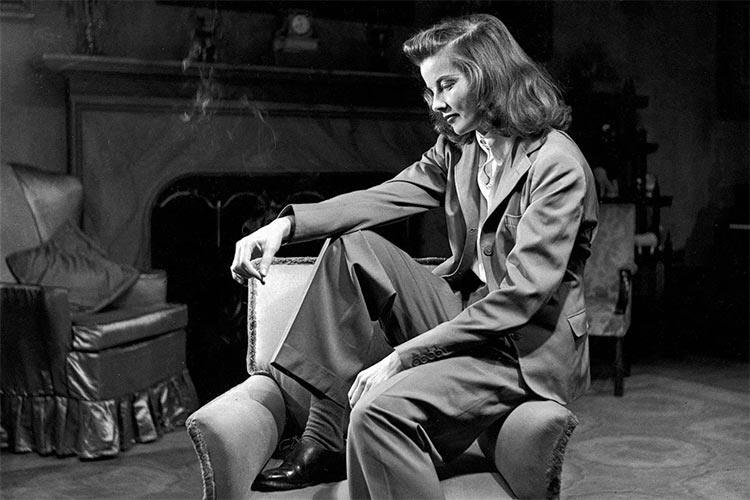
YSL 1966
So, as we navigate the ever-evolving landscape of fashion, let’s not forget the lesson these icons taught us: that to wear trousers is to wear one’s courage, one’s belief in the right to choose, to define oneself on one’s own terms. In every thread, every seam of those trousers, there’s a story of defiance, a legacy of liberation, a testament to the unending journey towards true equality. Katherine Hepburn and Marlene Dietrich, in their trousers, were not just dressing for the day; they were dressing for the future.
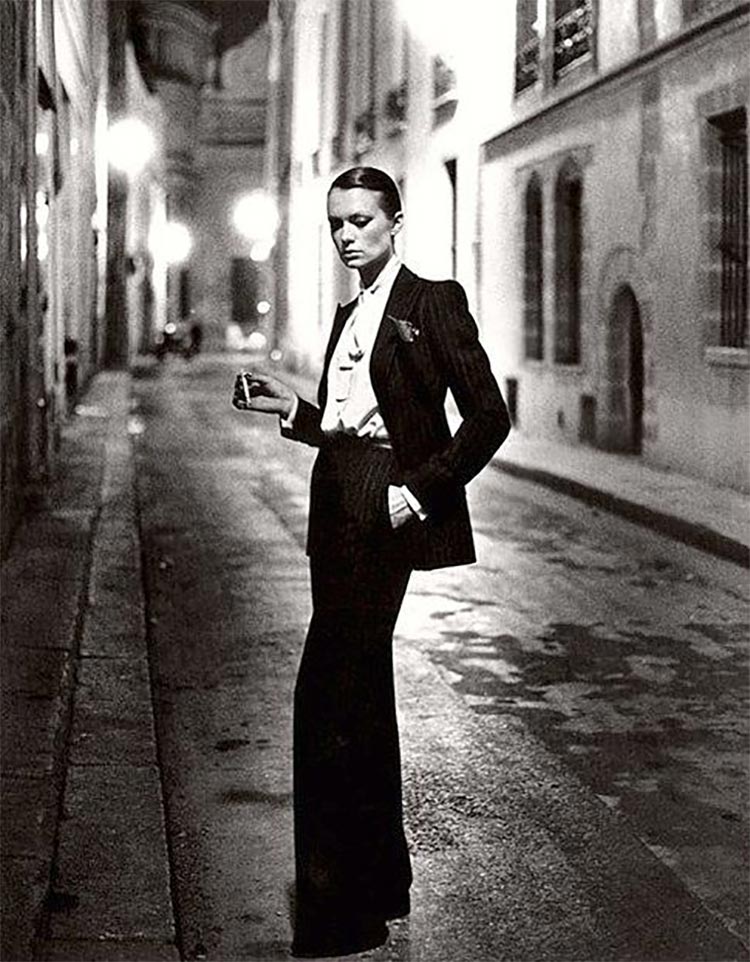
But, my darlings, the journey wasn’t without its bumps. The ’50s tried to confine us back into skirts, but we, the indomitable spirits, yearned for the freedom that only trousers could provide. And so, the pendulum swung back in the ’60s with Le Smoking by YSL, a beacon of chic defiance against the constraints of tradition. The real triumph, however, came later, when trousers broke the final frontier: the workplace. Oh, the battles fought over boardroom tables, where trousers were once considered a faux-pas! But we persevered, and by the ’80s and ’90s, thanks to trailblazers like Liz Claiborne, trousers weren’t just accepted; they were expected. They became our armor in the corporate battlefield, a symbol of our competence, our equality.

Conclusion
So, next time you slide into your favorite pair, remember this: you’re not just wearing trousers; you’re wearing history, defiance,and elegance. You’re wearing the dreams of every woman who dared to step out of the shadows and into the light. Trousers, my dears, are not just fashion; they’re a statement. And we, the glorious wearers, are the authors of this ongoing tale of style and empowerment.
Let’s raise our glasses, darlings, to the magnificent journey of women’s trousers, from forbidden to celebrated, from the shadows into the dazzling light of acceptance. Here’s to us, the women who wear them with an opulent flair, who know that every stitch carries.

